|
|
 |
|
|
|
|
|
Students at CSC2009
The following people have attended the 2009 CERN School of
Computing.
|
Victor DIEZ GONZALEZ |
CERN, Geneva - Switzerland |
|
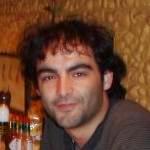 |
I have studied computer science at Rovira i Virgili University, in Tarragona
(Spain). I'm working at CERN since September 2008 in the PH-SFT group,
inside the geant4 project. I have transmitted its nightly testing system to
the LCG Applications Area Nightly Builds System, used by the rest of
projects of the group. Currently I am working in that system, moving the
results storage to a database and improving the presentation with AJAX
technology and offering more views and statistics about the testing.
|
|
| |
|
Laurentiu Alexandru DUMITRU |
National Institute for Physical and Nuclear Engineering, Bucharest - Romania |
|
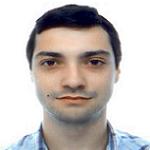
|
I graduated in Denmark with bachelor of computer science in 2008. I am
currently working at the National Institute for Physical and Nuclear
Engineering in Romania. I am part of the IT staff, involved in the
configuration and administration of RO-15-NIPNE grid site. I like
programming in C/C++ and .NET. Also I am very fond of network administration
and security.
|
|
|
Jan ENGELS |
DESY, Hamburg - Germany |
|
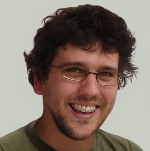
|
After studying Computer Science for 5 years in Coimbra (Portugal) I've
entered my first job at DESY (Hamburg) in August 2006 and have since then
been working as a software developer in the physics computing group.
My main projects so far were the development of a GUI for the
configuration of an application framework for data analysis and the
implementation of a build and installation tool for the software tools used
in the ILC community. I have been working exclusively in Linux environments
for the past 3 years and during this time I realized how much I like working
with this OS and my overall sympathy for the GNU/*nix community =)
|
|
|
|
|
Despoina EVANGELAKOU |
Georg-August University Göttingen - Germany |
|
 |
I am currently doing my PhD in the University of Göttingen and I am working
for ATLAS on physics analysis. A
good understanding of the computing environment and tools is necessary for
doing analysis. Therefore, I have
already basic experience with ATHENA (ATLAS analysis framework), ROOT and
Grid.
|
|
|
|
|
Gábor GAJDATSY |
University of Szeged - Hungary |
|
 |
As a PhD student I currently work on my thesis at the Department of Optics
and Quantum Electronics, University of Szeged. The main field of my work is
resolution enhancement of confocal microscopes using tomographic image
reconstruction. Besides I am a researcher of the Institute of Engineering
and Materials Science at the University where I develop numerical battery
models for the automotive industry.
Although these fields are relatively far from each other, both of
them indicate a huge amount of numerical problems, such as algorithm
optimization, boundary value problems, data storage and analysis,
controlling actuators and sensors, etc. To solve these problems I use MATLAB
scripts, C/C++ dynamic libraries and LabVIEW codes.
|
|
|
|
|
Carlos GARCIA RODRIGUEZ |
CERN, Geneva - Switzerland |
|
 |
I am a senior J2EE programmer with several years of experience developing
Web applications. I have been working in the GS-AIS-PM section at CERN since
September 2007, starting just after finishing my degree in SW Engineering at
the University of Oviedo (Spain). My main task at work are: Development of
Project Management Software for large CERN projects (LHC construction, CERN
medium term planning), based on Java EE technologies (Spring MVC, Apache
Struts, Hibernate, IBatis, Oracle ADF, Groovy, Google Web Toolkit), deployed
to Oracle 10g application servers. Administration and follow up of the
team's continuous integration server (Cruise Control, Apache Maven, Linux).”
|
|
|
|
|
Ana Maria GASPAR MARTINEZ |
CERN, Geneva - Switzerland |
|
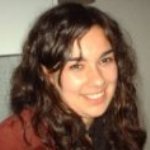 |
I am a computer engineer who currently works at CERN in the SFT group in the
Physics department for SPI (Software Process & Infrastructure) project. This
project, provides software support to the LHC experiments and LCG
Application Area (LCGAA) projects. The main task is to provide a test system
called Nightly Builds. This system allows the LCG projects to be built and
tested every night. Each project is built in different configurations (set
of versions of Application Area packages that are supposed to work together)
and in different platforms (set of different operating systems,
architectures and compilers). Also, the SPI project is in charge of the
installation of external packages needed by the LHC experiments and the
LCGAA projects. My work in this project is to develop a multithread version
of the nightly builds system to allow the test system use the most part of
the capabilities of the machines where it runs. The system is developed in
Python and uses Qmtest as a testing tool. I'm also in charge of installing
and upgrading the external packages and helping in the maintenance of the
current nightly builds system version.
|
|
|
|
|
Carlos GHABROUS |
CERN, Geneva - Switzerland |
|
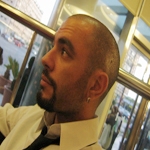 |
I have studied Telecommunication Engineering at the University of Málaga,
Spain, with emphasis in Communication Systems and Telematics, and before
joining CERN I was involved in the WiMAX technology certification program
and test system's design. I
came first time to CERN in 2007 in order to finish my studies and write my
master thesis, designing solutions for configuring remotely mobile devices
and other mobile services. Currently, I hold a fellow position in IT/CS
group and my work is related to the deployment and operation of mobile and
radio services, and to the design and validation of new telecommunications
network architectures. I mostly use PERL and PHP for self written
applications, but I am also familiar with C and C++.
|
|
|
|
|
Stephan HAENSEL |
HEPHY, Vienna - Austria |
|
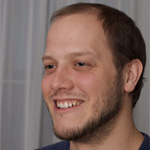 |
My work includes the simulation of detector layouts for future experiments
like the upcoming upgrade of the CMS Tracker for the SLHC accelerator and
the next generation International Linear Collider. This is done with LiC
Detector Toy, a fast simulation tool for charged tracks based on MATLAB. I
will be responsible for the programming parts of the online data acquisition
for a test beam setup at DESY and the subsequent analysis of the obtained
data. There
a first prototype of a silicon external layer for the ILD experiment will be
tested using the C++ based
LCIO framework, which is the common data model for linear collider detector
studies. In addition I will undertake the task of the analyses of various
test beams with silicon microstrip sensors.
|
|
|
|
|
Christian HARTL |
CERN, Geneva - Switzerland |
|
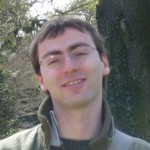
|
In 2007 I joined the CMS experiment to work in the Level-1 trigger system,
as a CERN doctoral student in physics. I am close to the trigger group of
Vienna's HEPHY institute, which developed the Global Trigger, Global Muon
Trigger, and Trigger Control System of CMS. My tasks currently focus on
online software for the configuration, control, and monitoring of this
hardware. I have developed web applications which serve GUIs for setup
manipulation, hardware monitoring, and interaction with the configuration
database. I have also designed the database storing full information about
available Level-1 trigger menu versions of CMS.
|
|
|
|
|
Marc HAUSARD |
CC-IN2P3, Villeurbanne - France |
|
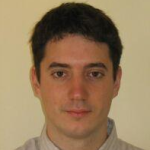 |
I work at CC-IN2P3 which is hosting the French Tier-1 centre of the LHC
grid. As one of the main HEP computing center, CC-IN2P3 is in strong
connection with CERN and other physics institutes all over the world.
Being in the Operation Team, my work involves interactions with the
local batch system as well as the mass storage system. Part of my role is
also to take part in the development of a monitoring platform for the
Operation Team with Nagios.
|
|
|
|
|
Natascha HOERMANN |
HEPHY, Vienna - Austria |
|
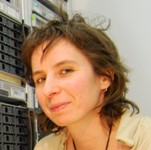 |
I am a PhD student at the Institute of High Energy Physics (HEPHY) in Vienna
and currently working on physics analysis for the CMS experiment at CERN. My
research area is the search for supersymmetry especially in the hadronic
channel in events with top quarks and MET, to which I contribute within the
SUSY working group. In the analysis I use the CMS software framework
(CMSSW), the Physics Analysis Tools (PAT), ROOT for histogramming and the
languages C++ and Python. Furthermore, I help to build up and support the
grid computing software environment and the physics data transfers at our
Tier-2 centre in Vienna.
|
|
|
|
|
David HORAT |
CERN, Geneva - Switzerland |
|
 |
I was raised in Gran Canaria, a Spanish island near the African coast.
There, I studied a M.Sc. in Computer Engineering at the ULPGC. Encouraged by
my colleagues and friends, I decided to go abroad. I spent 6 months with an
Erasmus scholarship in the German University FH NordAkademie, where I
developed an eLearning platform based on Moodle and other tools. I later
worked on my Master Thesis which focused on accessibility and usability on
web applications. I graduated with distinction.
I am currently working as a Software
Engineer in the European Organization for Nuclear Research -CERN-
specialized in grid and web technologies. I have also worked at Ericsson in
its R&D labs as a specialist on communication protocols. Among other things,
I have participated as a Moodle mentor in the Google Summer of Code program.
|
|
|
|
|
Lukasz JANYST |
CERN, Geneva - Switzerland |
|
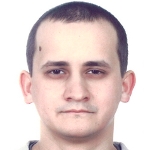 |
I graduated from the Jagiellonian University in Krakow, Poland in October
2008 where I completed masters’ studies in Computer Science. My thesis work
involved dealing with the data model schema evolution issues of the ATLAS
experiment and creating a framework, within the ROOT project, enabling users
to read old data files. After graduation I worked for a short time on a
prototype of a new C++ interpreter for ROOT and on the integration of the
gLite grid middleware. I currently work for the Data Management group at
CERN on a prototype of a nameserver for the CERN Advanced Storage Manager
(CASTOR).
|
|
|
|
|
Chad JARVIS |
UCLA, Los Angeles – U.S.A. |

|
I am a post doctoral research associate with the University of California
Los Angeles. I am located full time at CERN working on the CMS experiment.
My main work so far has been preparing an analysis for data based on Monte
Carlo simulations. I am looking for high pT muons from new charge gauge
bosons (W'). Most of my work involves running on the LHD Grid and on a local
UCLA batch system and then analyzing the results. I am familiar with
Linux/Unix and Windows and the programming languages C/C++, FORTRAN, Python,
Perl, and Bash.
|
|
|
|
|
Pavel JEZ |
Niels Bohr Institute, Copenhagen - Denmark |
|
 |
I am a Ph.D student at Niels Bohr Institute in Copenhagen.
At the moment I am involved in the commissioning and optimizing of the Tau
trigger at the ATLAS experiment at CERN. My work is focused on the
performance of the Tau trigger in the environment with multiple collisions
per bunch crossing, so-called pile-up collisions. The study is done on the
Monte Carlo samples produced with the Athena software framework.
For my analysis I am using ROOT
and its toolkit for multi-variate analysis in particular. The goal of my
study is to find an ideal set of observables which can be used to select
events with hadronically decaying tau leptons with the top performance in
terms of signal efficiency and background rejection.
|
|
|
|
Last edited:
25-Mar-13
|
|

